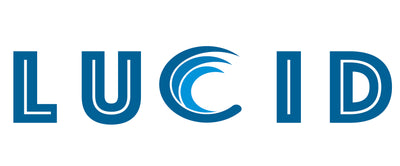
It doesn’t take much to master the basics of paddle boarding, and once you have the basic under your belt, you’ll be doing cooler acrobatic stuff like aqua yoga, SUP racing and kayaking.
Here’s your guide to unlocking all the amazing potential of the paddle board.
Real SUP Skill Starts with the Basics
In this age of social media it’s easy to want to do more than you might be able to simple due to pressure from advertisements or the like. However, remember you need to take baby steps and all those people pulling off those fancy moves too have to invest in the basics. Once you’ve found a paddle board you love, the natural next step is learning how to use it.
Balance should be your first focus when learning to paddle board. Might prove tricky at first but a strong core and body awareness are key to controlling your board in any condition. Invest in an at-home Balance Board and hit the gym for some abs work before braving the open water. Pilates, yoga, squats and lunges are great ways to hone your balance and abdominal strength at the same time.
Practice your pop-up from the shoreline to master one of the most important aspects of a SUP session.
Tip: be sure to remove your board’s fins first!
Lie belly-down on your SUP and slowly bend one knee at a time to reach a crouching position. With your hands and feet firmly planted on the board, propel yourself into a standing position. Once you stand up, it’s important to pay attention to your stance. Make sure your feet fall in the center of the board, hip-width apart. Slightly bend your knees to avoid cramps and to better maneuver your SUP.
Paddle boarding skills are some of the most overlooked techniques of standup paddle boarding. It’s so much more than wielding your carbon shaft paddle through the water. Between the size of the paddle and the technique you use, it all comes down to matching your body type with the ideal paddle. To find the right length paddle, stand the paddle upright so the blade touches the ground. Extend your arm above your head until you can grab the handle. The ideal paddle length allows you to comfortably grip the top of the paddle without straining your wrist.
Take it Up a notch with SUP surfing.
Time to put your balance and paddle skills to the test, however, it’s always better to test those skills before hand behind boat wakes and in choppy water. Stand up paddle surfing combines the toughest aspects of paddle boarding with the thrill of traditional surfing.
Be under no false assurance that SUPing is not hard; on the contrary, it takes hours and hours of practice and then some more. If paddle surfing is your goal, start with the right board. A board built for touring will do nothing but stifle your success. Lucid paddle boards is the perfect element for a perfect day of boarding. It has the perfect length, just the right amount of buoyancy and prime maneuverability.
And if it is your first time it is absolutely essential to find yourself in that part of the beach which is devoid of people and potential hazards. Walk out into the water until you’re waist-deep then hop onto your Lucid Board. Balance on your knees and use your paddle to paddle out through the whitewash. Even though Paddle surfing is actually easier than using a traditional surfboard; it is not so much in the beginning. When you scout out a wave, be sure to give yourself enough time to turn your board toward shore.
Once you paddle toward the sand and feel the momentum of the wave, use your paddle to guide yourself into the tightest part of the wave.
Paddle Yoga for Beginners and Pros.
It is not for nothing that paddle yoga is one of the top fitness trends all across America. It perfectly combines the relaxed atmosphere of your local waterway with the core-strengthening instability of the water. However again, if you wanna give unintentional dip a miss, it is important to take the basics into consideration, again! The first step to your SUP yoga success is to the right purchase a paddle board. The perfect board strikes the right balance between width and length — that’s where the iRocker Cruiser comes in. Sitting at 10’4” long by 33” wide, this board can support your Chaturanga, Kapotasana and every pose in between.
It’s important to treat SUP yoga differently than your traditional practice. When you move through your poses, take it slowly and focus on complete breaths.
Finding your center on the water will be achieved at a very different pace than in your studio, so it’s important to be patient with your body. Of course, the simplest form of yoga is the forward fold. Stand with your feet hip-width apart in the center of the board with the paddle resting in between. While maintaining a slight bend in your knees, drop your chest toward your thighs. Let your head hang toward your toes and grab onto each elbow with the opposite hand.
Focus on the right gear for paddle boarding
Whether you’re just starting out or on the journey to SUP mastery, the Lucid board is sure to check every box. Have a look at their selection of best-selling boards, must-have accessories and lifestyle gear and then decide which one would suit your needs.



